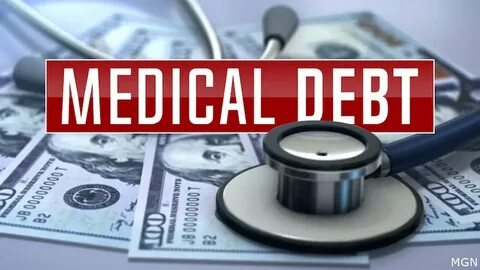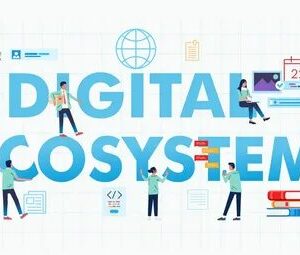
Outline:
- Introduction
- The Growing Concern of Medical Debt
- The Silent Impact of Medical Debt on Emerging Markets
- Overview of the Issue
- Understanding Medical Debt
- What is Medical Debt?
- How Medical Debt Accumulates in Emerging Markets
- Global Overview of Medical Debt Statistics
- Factors Contributing to the Rise of Medical Debt
- Lack of Adequate Healthcare Systems
- High Costs of Medical Treatment
- The Impact of Medical Insurance Gaps
- Rising Chronic Illness Rates in Emerging Markets
- Medical Debt in Emerging Markets: A Growing Crisis
- The Role of Health Systems in Financial Stability
- Economic Inequality and Medical Debt
- Health Emergencies and Financial Shocks
- The Middle Class Under Siege
- Implications for Financial Stability
- Impact on Personal Financial Health
- Effects on Household Savings and Wealth
- Rising Loan Defaults and Economic Recession Risks
- The Impact on National Economies
- How Medical Debt Affects Different Social Groups
- The Vulnerability of Low-Income Populations
- Women and Medical Debt
- The Aging Population and Its Challenges
- Children’s Health and Family Financial Strain
- Psychological and Social Effects of Medical Debt
- Stress and Anxiety in Debt
- The Emotional Toll on Families
- Impact on Social Mobility and Opportunities
- Strategies for Managing Medical Debt
- Debt Relief and Financial Planning
- Utilizing Government Programs and Social Services
- Financial Education and Healthcare Savings Plans
- How to Negotiate Medical Debt
- Government’s Role in Addressing the Medical Debt Crisis
- Public Health Systems and Their Challenges
- Policy Suggestions for Healthcare Affordability
- How Emerging Markets Can Expand Healthcare Coverage
- Corporate Sector’s Role in Alleviating Medical Debt
- Private Health Insurance Innovations
- Employer-Sponsored Healthcare Benefits
- Pharmaceutical Companies and Pricing Transparency
- Case Studies of Medical Debt in Emerging Markets
- Latin America: The Strain on the Middle Class
- India: Growing Medical Debt and Its Economic Impact
- Africa: The Challenge of Low-Income Healthcare Access
- The Path Forward: Addressing Medical Debt in Emerging Markets
- Creating Sustainable Healthcare Systems
- The Importance of Health Insurance Reforms
- Global Collaboration for Affordable Healthcare Solutions
- Conclusion
- The Urgency of Addressing Medical Debt
- Balancing Financial Stability with Healthcare Needs
- A Call to Action for Stakeholders in Emerging Markets
- FAQs
- What is medical debt, and how does it affect emerging markets?
- How can governments help reduce medical debt in low-income populations?
- What are the main causes of medical debt in emerging markets?
- How does medical debt affect social mobility and mental health?
- What steps can individuals take to manage medical debt?
READ MORE: Understanding the Ripple Effect of Student Loan Debt on Generational Wealth
Uncover the Shocking Crisis of Student Loan and Medical Debts: How It Devastates Generational Wealth and Threatens Future Financial Stability
Introduction
The Silent Rise of Medical Debt has become a growing concern across the globe, particularly in emerging markets where healthcare systems often struggle to meet the demands of their populations. While developed countries have seen a gradual improvement in their healthcare infrastructure, many developing nations face increasing medical costs, which are driving many individuals and families into debt. This debt, often accumulated unexpectedly due to medical emergencies, has significant implications not just for personal financial health, but for the stability of entire economies.
As healthcare costs rise and access to essential medical care becomes a challenge for large portions of the population, medical debt is emerging as an invisible crisis. In this article, we explore the implications of medical debt for financial stability in emerging markets and how it affects personal finances, public health systems, and even national economies. We also examine the psychological and social effects this debt has on families and individuals, particularly those in low-income brackets.
Understanding Medical Debt
What is Medical Debt?
Medical debt refers to the financial obligation individuals owe for medical services, including hospital stays, outpatient treatments, surgeries, and prescription medications. It often results from a lack of insurance coverage or from high out-of-pocket costs that exceed a person’s ability to pay. In emerging markets, where healthcare insurance coverage may be minimal or inaccessible to a large portion of the population, medical debt has become a major cause of financial instability.
How Medical Debt Accumulates in Emerging Markets
In many emerging markets, healthcare systems are often underfunded and overburdened, leading to long wait times, inadequate facilities, and out-of-pocket expenses for those seeking medical care. When individuals are forced to pay for treatments, medications, and hospital stays themselves, medical debt quickly escalates. Lack of access to affordable healthcare, insufficient insurance coverage, and the rising costs of medical procedures contribute to this growing burden.
Global Overview of Medical Debt Statistics
Around the world, millions of people face overwhelming medical debt. According to the World Health Organization, approximately 100 million people worldwide fall into extreme poverty due to catastrophic health expenses each year. In emerging markets, this number is even higher, as healthcare costs continue to rise and insurance systems fail to cover all necessary services.
READ MORE: World Health Organization – Universal Health Coverage
Factors Contributing to the Rise of Medical Debt
Lack of Adequate Healthcare Systems
One of the primary reasons medical debt is rising in emerging markets is the lack of universal healthcare systems. Countries like India, many in Africa, and parts of Latin America face challenges in providing affordable and accessible healthcare to their populations. With limited access to insurance or government-subsidized care, individuals often end up paying out-of-pocket for essential medical services, leading to overwhelming debt.
High Costs of Medical Treatment
As medical treatments become more advanced and specialized, their costs are rising. For individuals in emerging markets, where incomes are often lower, the price of essential treatments, including surgeries, hospital stays, and medications, can easily exceed what they can afford. In many cases, people resort to borrowing money, taking out loans, or using credit cards to cover medical bills, which leads to a cycle of debt.
The Impact of Medical Insurance Gaps
In many emerging markets, access to medical insurance is either limited or entirely unavailable. This forces individuals to pay the full cost of their medical care out of pocket. Even when insurance is available, it often does not cover critical treatments or comes with high premiums that many cannot afford. These gaps in insurance coverage are a major driver of medical debt in these regions.
Rising Chronic Illness Rates in Emerging Markets
The increasing prevalence of chronic diseases, such as diabetes, heart disease, and cancer, is putting additional strain on healthcare systems. In many emerging markets, where preventive care is often lacking, these chronic conditions go untreated until they require expensive emergency care. The costs associated with ongoing treatment for chronic illness contribute significantly to rising medical debt.
Chronic Disease in Emerging Markets – WHO
Medical Debt in Emerging Markets: A Growing Crisis
The Role of Health Systems in Financial Stability
In emerging markets, a weak healthcare system often translates into financial instability for households. When people are faced with medical emergencies, they are forced to make impossible decisions between seeking treatment and accumulating debt. In countries with limited social safety nets or health insurance, the financial burden of medical debt can push families into poverty.
Economic Inequality and Medical Debt
The rise of medical debt is also closely tied to the growing economic inequality in emerging markets. Those with lower incomes are disproportionately affected by healthcare costs, as they are less likely to afford treatments or have access to quality care. This creates a vicious cycle where the poor are more likely to suffer from medical debt, leading to greater economic disparity.
Health Emergencies and Financial Shocks
Health emergencies, such as accidents or sudden illness, can lead to immediate and unexpected medical costs. Without savings or insurance, individuals and families often resort to borrowing money or taking out loans to pay for these emergencies, leading to long-term medical debt that is difficult to pay off. In many cases, the financial shock of a medical emergency can set back families’ economic progress by years.
The Middle Class Under Siege
The middle class in emerging markets is also being affected by rising medical debt. With the increasing costs of healthcare, many people who once felt financially secure are now facing significant debt. This growing financial burden is eroding the middle class and threatening financial stability across entire populations.
Implications for Financial Stability
Impact on Personal Financial Health
Medical debt has a profound impact on personal financial health. It not only drains savings but also limits future financial opportunities. Families burdened with debt may be forced to delay buying homes, investing in education, or saving for retirement. The stress of managing debt can also take a toll on mental health, further exacerbating financial instability.
Effects on Household Savings and Wealth
For many households in emerging markets, medical debt is a significant drain on savings and wealth. As families are forced to spend more on medical bills, they are left with less money to save or invest in their future. This depletion of wealth can have long-lasting effects, limiting economic mobility and future opportunities.
Rising Loan Defaults and Economic Recession Risks
The rise of medical debt in emerging markets is not just a personal financial issue—its broader implications reach deep into the economy. As medical debt increases among households, so does the risk of rising loan defaults, creating a ripple effect that can contribute to larger economic instability. Understanding how rising loan defaults and economic recession risks are interlinked with medical debt is critical for both policymakers and financial institutions.
The Link Between Medical Debt and Loan Defaults
Medical debt is one of the primary causes of loan defaults, particularly in regions where healthcare systems are underdeveloped or costly. When families face unexpected medical expenses and lack adequate insurance coverage, they are often forced to take on high-interest loans or use credit cards to pay for treatments. In many cases, these loans are not repaid on time, leading to loan defaults.
The stress of accumulating medical debt often leads individuals to delay or default on other financial obligations. For instance, a family struggling to pay for a major medical procedure may neglect to pay their mortgage, car loans, or credit card bills. The long-term effects of medical debt can disrupt the normal flow of repayments, leading to a spike in loan defaults. This is particularly dangerous in emerging markets, where financial systems are still developing and may not be equipped to handle an uptick in defaults.
For financial institutions, an increase in loan defaults caused by medical debt can lead to financial instability. Banks and lenders may face higher rates of non-performing loans (NPLs), which impact their ability to lend and create a more conservative approach to future lending. As loan defaults increase, the credit risk for lenders rises, making borrowing more expensive and less accessible to those who need it most.
READ MORE: IMF – Loan Default Risks in Emerging Markets
Impact on Financial Institutions
When there is an increase in loan defaults related to medical debt, it directly affects the liquidity and profitability of financial institutions. Banks, microfinance institutions, and lending platforms may experience a rise in default rates, leading to a slowdown in their operations. Financial institutions are typically required to set aside a portion of their capital as reserves for bad loans, and an increase in loan defaults means that more funds must be reserved, leaving less capital available for lending to other borrowers.
As defaults rise, financial institutions may also increase interest rates to compensate for the additional risk, which, in turn, makes borrowing more expensive for everyone. The knock-on effect can be devastating for those already struggling with medical debt, as the cost of borrowing becomes prohibitively high. This creates a vicious cycle: medical debt leads to loan defaults, which leads to higher borrowing costs, further exacerbating financial instability.
The Impact on Consumer Confidence and Spending
When loan defaults rise due to medical debt, consumer confidence typically falls. People who are already struggling to meet their medical expenses may feel uncertain about their financial future, which in turn impacts their overall spending behavior. As people begin to prioritize paying off their debts, discretionary spending on goods and services decreases. This contraction in consumer spending has a direct impact on businesses, as lower consumer demand leads to reduced sales and slower economic growth.
In many emerging markets, where the middle class is already financially fragile, a decrease in consumer spending can push entire economies into recession. When the flow of money into businesses slows down, companies may be forced to lay off workers, freeze hiring, or cut back on investments. This, in turn, creates a negative feedback loop of rising unemployment, decreased consumer spending, and even more defaults on loans.
Risks of Economic Recession from Medical Debt
The rise in medical debt and the subsequent increase in loan defaults can contribute significantly to the risk of an economic recession, especially in emerging markets. As more individuals default on loans and businesses scale back on investments, economic growth slows down. In economies that already have high poverty rates, the impact of rising medical debt is even more pronounced, as it deepens the financial divide and reduces overall economic activity.
Impact on Government Budgets
Governments in emerging markets that are already struggling with limited resources face the challenge of mitigating the impact of rising medical debt and loan defaults. As more people default on loans, governments may need to increase their spending to support struggling families. This might include expanding social safety nets, providing financial aid, or offering loan relief programs. However, this puts additional pressure on government budgets and can lead to increased borrowing by governments, potentially triggering a debt crisis or further economic instability.
Additionally, when the middle class, which is often a significant contributor to tax revenues, faces financial hardship due to medical debt, government revenues may fall. This creates a situation where governments are faced with reduced revenues and increased spending, making it more difficult to maintain financial stability.
The Global Impact of Rising Medical Debt and Loan Defaults
The interconnectedness of global economies means that the rise in medical debt in one region can have ripple effects across borders. Emerging markets are often a key component of the global supply chain, with industries like manufacturing, agriculture, and services playing a pivotal role in international trade. If medical debt in these markets leads to a slowdown in consumer spending and economic activity, it can impact global demand for goods and services, affecting economies worldwide.
For example, if a country in Africa or Asia sees a rise in medical debt, it could lead to a decrease in the purchasing power of consumers, which would reduce demand for products from Western countries or other emerging economies. This would affect not only the domestic economy but also global trade and financial stability.
Strategies to Prevent Loan Defaults and Economic Recession
Addressing the rising risks of loan defaults and economic recession due to medical debt requires a multifaceted approach. Here are some strategies that can help mitigate these risks:
- Improving Healthcare Access: Expanding access to affordable healthcare is one of the most effective ways to reduce medical debt in emerging markets. Governments and international organizations can collaborate to build better healthcare infrastructure and offer more affordable healthcare options for low-income populations.
- Health Insurance Expansion: Increasing access to affordable health insurance is crucial. Governments and private companies can offer subsidies or create public insurance programs that cover essential medical treatments. This would reduce the financial burden on households and prevent the accumulation of medical debt.
- Financial Education: Promoting financial literacy, especially in emerging markets, can help individuals better manage their personal finances and avoid accumulating unsustainable medical debt. Financial education programs can teach individuals how to save, invest, and plan for medical emergencies.
- Debt Relief Programs: Governments and financial institutions can introduce debt relief programs for individuals struggling with medical debt. These programs could include debt restructuring, lower interest rates, or even partial debt forgiveness for those facing financial hardship due to medical bills.
- Strengthening the Social Safety Net: Governments should ensure that their social safety nets—such as unemployment benefits, social security, and emergency financial assistance—are robust enough to support individuals facing financial distress due to medical expenses. This support can help prevent defaults on loans and avoid economic shocks.
The rise of medical debt in emerging markets poses a significant risk to both personal financial health and broader economic stability. As healthcare costs continue to rise and insurance systems remain inadequate, millions of people in these markets are being pushed into debt. This leads to rising loan defaults, decreased consumer spending, and an increased risk of economic recession.
Governments, financial institutions, and businesses must take proactive steps to address the root causes of medical debt and implement strategies to prevent loan defaults. By improving healthcare access, expanding insurance coverage, and providing financial support, we can mitigate the risks associated with medical debt and help ensure long-term economic stability in emerging markets
As more individuals and families in emerging markets take on medical debt, the risk of loan defaults increases. This can create a ripple effect throughout the economy, as financial institutions face higher rates of default, leading to tighter lending standards and slower economic growth. In extreme cases, widespread medical debt can contribute to economic recessions, as consumer spending slows down and investment declines.
Conclusion
The rise of medical debt in emerging markets presents a growing challenge to both personal financial stability and the broader economy. As healthcare costs rise and access to affordable care remains limited, millions of people are burdened by debt they cannot afford to repay. Addressing this crisis requires coordinated efforts from governments, healthcare providers, and the private sector to create more affordable healthcare systems, increase access to insurance, and provide better financial education and support.
In the meantime, individuals must take proactive steps to manage their healthcare expenses, utilize available government programs, and seek debt relief when necessary. It is clear that without addressing the underlying issues of medical debt, emerging markets will continue to face significant financial instability, with long-term consequences for both individuals and the global economy.
FAQs
1. What is medical debt, and how does it affect emerging markets?
Medical debt is the financial obligation incurred when individuals are unable to pay for necessary healthcare. In emerging markets, where healthcare access is limited and insurance coverage is inadequate, medical debt is a significant barrier to financial stability.
2. How can governments help reduce medical debt in low-income populations?
Governments can help by expanding public health systems, subsidizing medical insurance, and offering financial assistance to those struggling with medical expenses. Public health initiatives can also reduce the incidence of chronic diseases, which are a major driver of medical debt.
3. What are the main causes of medical debt in emerging markets?
The primary causes of medical debt in emerging markets include high medical treatment costs, inadequate healthcare systems, and the lack of affordable insurance coverage. The rising rates of chronic illness also contribute to the growing burden of debt.
4. How does medical debt affect social mobility and mental health?
Medical debt can limit social mobility by preventing families from accessing education, housing, or other opportunities. The emotional toll of debt can also lead to stress, anxiety, and depression, which affect both mental health and overall well-being.
5. What steps can individuals take to manage medical debt?
Individuals can manage medical debt by negotiating payment plans, utilizing government assistance programs, and seeking financial counseling. It’s also important to have health insurance and maintain an emergency savings fund to prevent the accumulation of debt during medical crises.







